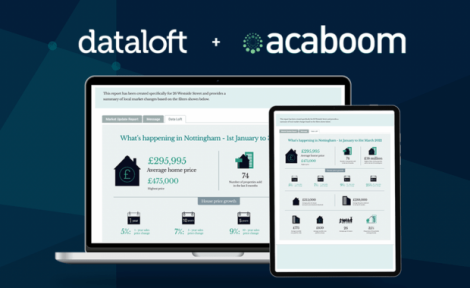Using local data to drive instructions
Local property data and information can bring you instructions and impress buyers, but you need to know how to access it and how to use it, says Lisa Isaacs.

Agents can tap into a vast bank of data that can be filtered down to ultra-local – even individual property – levels but many are guilty of only waving a few pie charts under the nose of a potential client at the end of a valuation. It’s such a waste of the valuable insights available.
So why is now the time to focus on local property data and how we use it? While a degree of optimism is floating around the sales market, there were some figures published in January that pointed to persistent challenges.
Instruction numbers in focus
When serial number cruncher Christopher Watkins analysed TwentyEA data to discover 60% of agents were surviving on less than four listings a month, ripples of discomfort were felt in the industry. His stat was backed up by figures from Propertymark that showed new instructions before the New Year were in ‘freefall’ – nine per member branch in October, dropping to six in November and five in December.
Seasonal variations, perhaps, but agents need to win instructions. The temptation, however, is appealing to the masses by targeting every property possible – especially after a lean period. This is something Katy Billany at TwentyEA feels hesitant about.
Target to reduce time wasters
 “It has never been more important to have the right data to underpin business strategies and marketing campaigns,” says Katy. She advises caution when taking a blanket approach to canvassing. “Agents should avoid taking on properties that will cost misplaced time and money to market – ones that may languish on their books without a sale. Data is there to understand local marketplaces so agents are generating the right instructions.”
“It has never been more important to have the right data to underpin business strategies and marketing campaigns,” says Katy. She advises caution when taking a blanket approach to canvassing. “Agents should avoid taking on properties that will cost misplaced time and money to market – ones that may languish on their books without a sale. Data is there to understand local marketplaces so agents are generating the right instructions.”
Katy adds that a common mistake is to only target within what an agent views as their sweet spot. “For example, some agents will only market to properties above a certain value, or within a particular Council Tax band, but if demand on their patch is strong for cheaper two-bedroom terraces, they may be missing out on potential instructions that will sell with ease.”
Data generated by TwentyEA tells agents how long different types of properties in a set area are taking to sell and what percentage of those sales are falling through. “We know flats are currently taking three and a half months to sell in the North West, while semi-detached properties are selling in half the time,” says Katy. “It’s these valuable localised snapshots that allow agents to target the best returning leads, rather than waste resources on duds.”
Keeping conversations relevant

Rory Black knows Dataloft’s insights can incentivise when you really have to warm a client up – like now when there’s an air of caution: “It can take a long time for people to make decisions, even after making
contact or having a valuation. That’s why the nurture phase is so crucial.”
For Rory, the ‘drip drip’ of local data can be useful. “We often talk about the importance of creating ‘life-long conversations’ with clients but to keep in touch, you need something interesting to talk about,” he comments.
What could be more relevant to someone interested in selling or letting than sharing information about their local market?”
“What could be more relevant to someone interested in selling or letting than sharing information about their local market? This is where crafted property data becomes a valuable marketing commodity.”
Dataloft’s infographics and easily-digested reports work well when posted to the channels home movers love to explore, like social media, as well as making great print outs, downloadable PDFs and emailable files.
But for all the breakdown of sales volumes and postcode insights, sometimes an up-to-date property valuation is the catalyst for a sale. People love knowing how much their home is worth – especially if it’s more than they paid or better still, more than their neighbour’s.
What’s it worth?
“There’s almost nothing more valuable than letting potential clients know how the price of their property is faring and what other properties like theirs have sold for. We all fall for the FOMO effect,” adds Rory.
“Sending out regular local market reports ensures agents stay on the radar of future customers. Which agent will they come to when they next need something or are ready to move? The one they haven’t heard from? Or the one that sends valuable content derived from local property data?”
Local data is also worth its weight in gold when it comes to on-market prospecting. It will be especially game-changing for those who are charting Rightmove’s current average UK asking price. In January, the portal’s House Price Index revealed average new seller asking prices rose by 1.3% (+£4,571) month-on-month, despite repeated calls for realistic expectations among sellers.
Tracking the triggers
Overpriced properties could be a real trigger for sellers swapping agents, says Heather Staff at Spectre. “Looking at January 2024, the market has already experienced the highest number of property price reductions when comparing the same month over the past three years,” notes heather. “Furthermore, 28% of property listings that underwent a price reduction in 2023 reduced their price more than once – and a number of these listings are still on the market.”

Heather advises agents to pay particular attention to reduced competitor stock in their area, and implement a strong prospecting strategy for targeting, nurturing and winning these second instructions over the following weeks and months.
Data also shows properties are taking longer to sell. Spectre’s analysis revealed that properties sold in January 2024 were on the market for an average of 12% longer compared to last year, and a staggering 50% longer than in January 2022.
Spectre makes this analysis available to agents at a local level, with property data sets filtered according to price reductions and time-on-market – both indicators that a vendor may look to swap agents soon.
It’s all made possible thanks to advanced AI algorithms. “AI can efficiently collect, analyse, process and refine vast amounts of data, which would be otherwise near impossible if done manually,” adds Heather.
AI can efficiently collect, analyse, process and refine vast amounts of data, which would be otherwise near impossible if done manually.”
Tools like Spectre AI can also predict the properties most likely to come to market as new or relisted instructions – those that have fallen through or have been withdrawn recently, for instance – allowing agents to focus on the most likely-to-convert opportunities.
Think of highly-targeted local property data as adding some precise science to your sales strategy. It’ll give you laser focus before, during and after every instruction, with insights that far outperform a basic property valuation.





